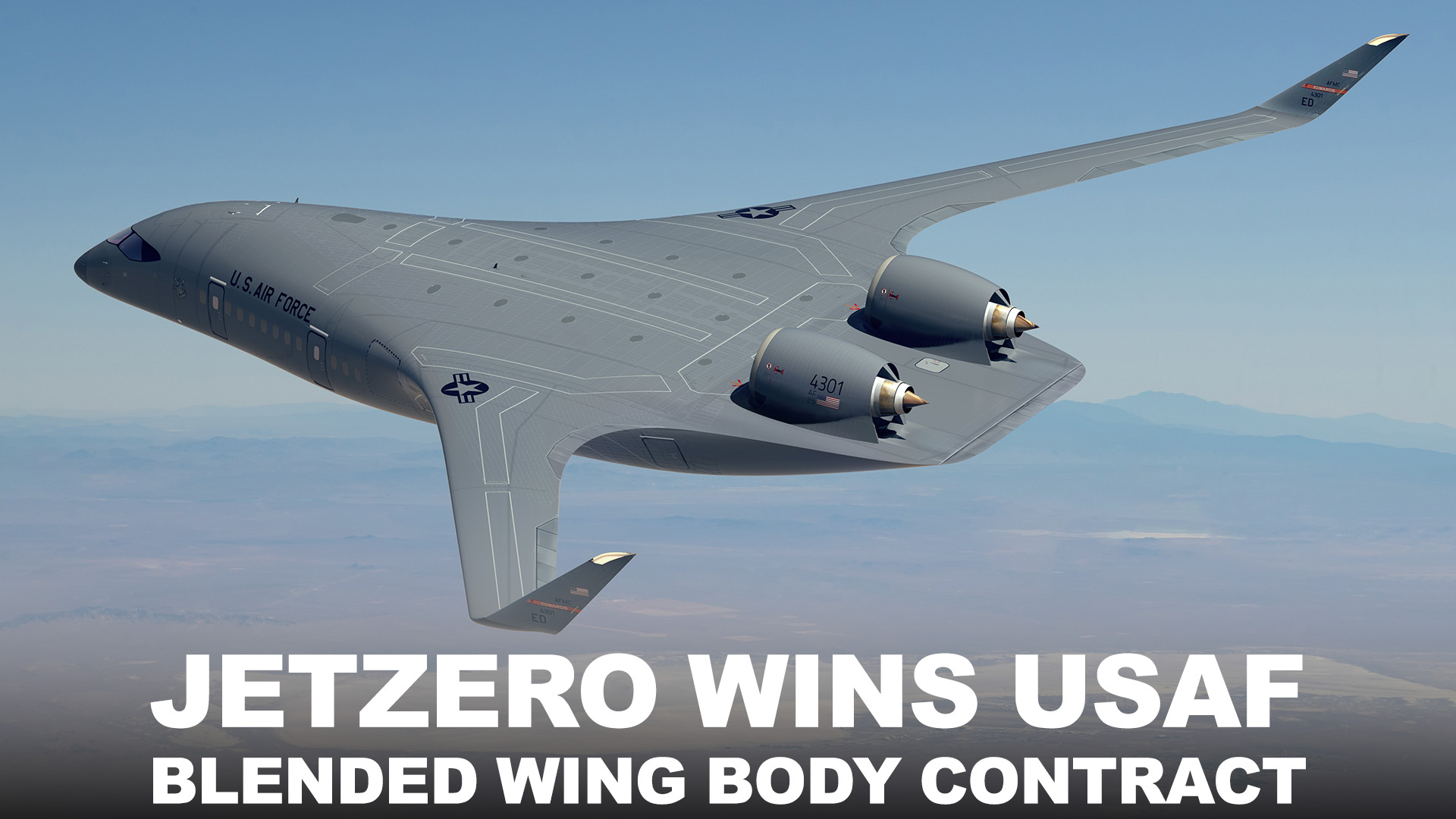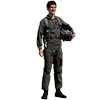JetZero Wins $235M Blended Wing Body Contract from US Air Force

Artist's concept of JetZero Blended Wing Body for US Air Force
Artwork courtesy: US Air Force
The US Air Force has awarded a $235 million contract to JetZero, a Long Beach-based aviation startup, to build and fly a full-scale technology demonstrator for a blended wing body (BWB) aircraft. The contract was announced by Air Force Secretary Frank Kendall on August 16, 2023, as part of the Department of Defense's Defense Innovation Unit initiative.
In a statement, the Air Force Operational Energy Office said it, "expects completion of initial flight testing as early as 2027."
A BWB aircraft is a fixed-wing aircraft that has no clear dividing line between the wings and the main body of the craft. The aircraft has distinct wing and body structures, which are smoothly blended together to reduce drag and increase lift. This design is different from a flying wing, which has no distinct fuselage, and a lifting body, which has no distinct wings.
The BWB concept has been explored for decades by entities ranging from NASA, to Boeing, Lockheed Martin, and Airbus. The main advantage of the BWB is to improve fuel efficiency and reduce propulsion engine-related emissions and noise, which are key goals for military and commercial aviation. JetZero claims that its BWB design can halve fuel burn and carbon emissions compared to conventional tube and wing aircraft.
JetZero is developing the BWB aircraft in partnership with Northrop Grumman and its Scaled Composites subsidiary. The company plans to use Pratt & Whitney's Geared Turbofan engines for the demonstrator, but also envisions future versions with hydrogen propulsion. The BWB aircraft is expected to have applications for aerial refueling (so-called tankers), cargo, and passenger transport.
A pure hydrogen propulsion variant would offer zero emissions from combustion byproducts during operations, apart from any produced during the production of the hydrogen fuel. It should be noted that a hydrogen fuel cell version may still produce emissions that lead to condensation trails, commonly known as contrails.
The BWB project faces technical challenges, such as maturity of manufacturing technologies, handling qualities, stability, control, and in-flight configuration changes.

Craig has decades of experience contributing to Flight International, Aviation Week, KCRW, NPR, and appearances on the Discovery, Military and History Channels.

 Welcome to AeroSpaceNews.com, the world's first
Welcome to AeroSpaceNews.com, the world's first